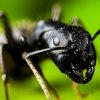They are walking over the Fluon no problem, when I first put it on it worked fine. It has been very humid and I put the Fluon on months ago. Would it be okay to put on another coat? While the ants are still present or will it harm them?
I should have read up more on barriers I though Fluon was permanent, is there anything better to use for smaller ants.
99% ISO and baby powder works great for my Camponotus, does it work well with small ants?
They are in a Tarheel talus.
























